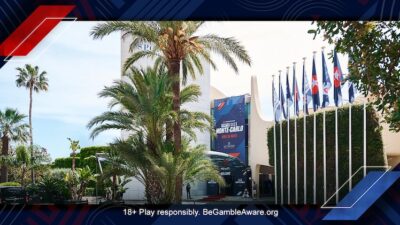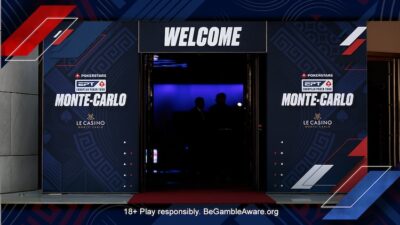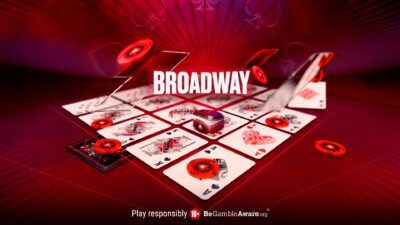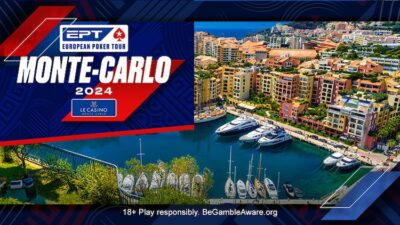In my previous post for PokerStarsBlog I mentioned that my plan for 2015 was to start learning Pot-Limit Omaha at the PokerStars tables and that I would write a monthly blog post to keep you guys up to date.
January is over and it’s time to share the first part of my quest with you!
The beginning
I started by playing at the mid-stakes. Two weeks and 10k hands later I was crushing nose-bleeds! I soul-crushed Ike Haxton, Phil Galfond, and all those guys that have the money to play against me. EzGame!
Ok, nothing in the previous paragraph was true. That could only be part of a dream or some sort of terrible bankroll management combined with tons of luck and a bit of delusion! In real life things move a bit slower, so let’s start again, but with something realistic this time:
The first days were pretty tough, because I had no clue about how good each hand was, what hands I should open from each position, what hands I should be calling, 3-betting, equities, etc.
Ring a bell? It was like going back to my earlier poker days when I was struggling to learn the secrets of Texas Hold’em!
I was playing micro-stakes, $0.01/$0.02 Zoom and being owned! Every time I had the nuts and I raised, they would fold. Every time I called someone without the nuts, they had the nuts. What a nightmare!
At that point I started by learning the absolute basics, trying to figure out how hands work in Pot-Limit Omaha, what to expect from a hand post-flop and what hands I could open from each position.
I read a book that I had on my shelf called “Pot Limit Omaha: Understanding Winning Play” by William Jockusch. To be honest, I’ve never heard about the author before, but he covered the basics pretty well in his book, so until I get more experience with PLO books, I will recommend this one for sure.
Also, whenever I had some questions like “should I open KK72 from UTG?” I had two high stakes friends that work with me and were kind enough to reply to my basic questions. Special thanks to Pedro “Zagalo87” Zagalo and André “Sira Al Aziz” Santos for their patience!
After feeling more comfortable about which hands to open from each position, I started watching some videos from Phil Galfond at his site Run It Once and taking a lot of notes. There is a lot of value in those videos for sure!
Something interesting that I realized after few days of playing the micros was that most players were just trying to flop the nuts and go with those hands. There weren’t people calling down all the way to the river with one pair, or even two pairs that were not top 2. So, most people were playing pretty loose pre-flop, but super nitty post-flop, which leads to great bluffing opportunities post-flop!
So, I started bluffing more! People were giving me credit every time I raised on the flop, even showing that they could fold two pairs very often. They were also giving me credit to just 3-bet with aces and folding most of the times on the flops that were more aces-friendly, etc.
Good times at PLO2!
I only played 4k hands, so it’s not a lot of hands, but I feel that what many people say about the unbeatable rake at micro-stakes is a myth and that a good player can beat the rake and have a profit at PLO2. I’m up for a bet over a reasonable sample of hands if you disagree with me!
I moved up to PLO5 to see if I could just apply the same strategy, but people were playing a bit better pre-flop and my bluffs were working way less often. Those people don’t like to fold as much, for sure. I probably need a bit of work/sample before drawing more conclusions at PLO5.
Let’s take a look at my results:
I hear a lot of pros saying that it takes them X hands to move from stake Y to Z and recreational players assume that it will work the same way for them and focus too much on volume.
The pros are not wrong. It is actually true for them because they skip the learning process since they already know how to play and beat the format.
However, I think that this is counter-intuitive for most players, myself included. Whenever I’m starting out and learning at the micros, I don’t need to play 20k hands or something to try to move up from one stake to another. I feel that my focus should be on improving every day, figuring out the basic mechanics of the format I am playing, and then figuring out how to adjust and adapt versus specific players or types of players.
I will play tons of hands eventually, but it will be whenever I reach higher stakes, whenever I have studied and improved a lot and get the opportunity to play against people that haven’t worked as much on their game.
The Journal
I started writing a daily journal in the days I’m working and it’s been great! I write it just for myself, with lots of misspellings and grammar mistakes–quick and dirty. This helps me get some thoughts out of my mind and allows me to think about other stuff. It also allows me to be able to go back and see what I was thinking or feeling on a particular day, week, or month.
If you haven’t tried it yet, I recommend that whenever you spend a lot of time thinking about something, just write everything that goes into your mind and keep it to yourself. You may see some progress!
Routine
I started this PLO quest by waking up at 8am every day, having breakfast, stretching, running for like 40 minutes, stretching again, taking a shower, and driving to the office to work. I would work until 6pm, drive back home and then do some weight lifting. After that I would write my journal, have dinner with my lovely fiancée, and watch some series or a movie.
It was a pretty busy routine, and after four days I was feeling pretty tired, so I ended up moving the running to the end of the afternoon in order to avoid showering twice per day. That saved me some time, so that I can rest more and have more working time in the morning.
I’ve noticed that after running I tend to get an energy boost for 30-40 minutes, so I’ve been using that extra energy to either write my ideas into my journal, or to finish studying the topic of that day. It’s pretty cool!
Now I need to go back to my quest. You can either wait for the next big update in March or you can follow me on Twitter or Facebook and get my daily thoughts and updates.
Thank you for reading and see you at the tables!
André Coimbra is a member of Team PokerStars Pro Online
Back to Top






